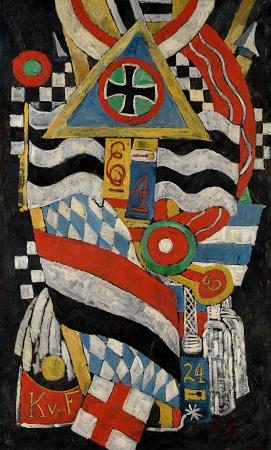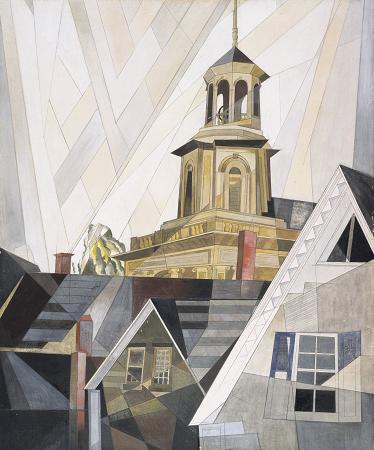Charles Demuth (1883 - 1935). Charles Henry Buckius Demuth was an American watercolorist who turned to oils late in his career, developing a style of painting known as Precisionism. Search the history of American art, wrote Ken Johnson in The New York Times, and you will discover few watercolors more beautiful than those of Charles Demuth. Combining exacting botanical observation and loosely Cubist abstraction, his watercolors of flowers, fruit and vegetables have a magical liveliness and an almost shocking sensuousness. Demuth was a lifelong resident of Lancaster, Pennsylvania. The home he shared with his mother is now the Demuth Museum, which showcases his work. He graduated from Franklin & Marshall Academy before studying at Drexel University and at Philadelphia's Pennsylvania Academy of Fine Arts. While he was a student at PAFA, he participated in a show at the Academy, and also met William Carlos Williams at his boarding house. The two were fast friends and remained close for the rest of their lives. He later studied at Académie Colarossi and Académie Julian in Paris, where he became a part of the avant garde art scene. The Parisian artistic community was accepting of Demuth's homosexuality. After his return to America, Demuth retained aspects of Cubism in many of his works. Charles Demuth was born on 8 November 1883 in Lancaster, Pennsylvania. In 1889, when Demuth was 6 years old, his family moved to an 18th-century house 120 East King Street. In the colonial period the house had been a tavern. The tobacco shop owned and run by his family since 1770, was next door. Demuth lived at the King Street house with his mother, Augusta for the rest of his life. He maintained a small studio on the second floor. Throughout his career, Demuth remained deeply attached to Lancaster. The city's modest commercial and civic architecture was the subject of hundreds of his watercolors and paintings. His depictions of warehouses, factories and row houses imbue these ordinary structures with a grandeur and glamor normally associated with cathedrals, palaces and temples. For example, his image of two Lancaster grain silos, entitled My Egypt, invites the viewer to compare the massive volumetric forms to pharaonic monuments like the pyramids. Demuth either suffered an injury when he was four years old, or may have had polio or tuberculosis of the hip, leaving him with a marked limp and requiring him to use a cane. He later developed diabetes and was one of the first people in the United States to receive insulin. Demuth pronounced his surname with emphasis upon the first syllable, earning him the nickname Deem among close friends. From 1909 onwards, Demuth maintained a romantic relationship with Robert Evans Locher, an Art Deco interior decorator and stage designer. While he was in Paris he met Marsden Hartley by walking up to a table of American artists and asking if he could join them. He had a great sense of humor, rich in double entendres, and they asked him to be a regular member of their group. Through Hartley he met Alfred Stieglitz and became a member of the Stieglitz group. In 1926, he had a one-man show at the Anderson Galleries and another at Intimate Gallery, the New York gallery run by Stieglitz. Demuth was introduced to modernism during trips to Europe between 1907 and 1921. On frequent trips to New York, he encountered avant-garde styles and ideas, most notably Cubism, the influence of which is reflected in many of his works. His most famous painting, I Saw the Figure 5 in Gold, was inspired by his friend William Carlos Williams's poem The Great Figure. Roberta Smith described the work in The New York Times: Demuth's famous visionary accounting of Williams, I Saw the Figure Five in Gold, a painting whose title and medallion-like arrangement of angled forms were both inspired by a verse the poet wrote after watching a fire engine streak past him on a rainy Manhattan street while waiting for Marsden Hartley, whose studio he was visiting, to answer his door. Describing its importance, Judith H. Dobrzynski in The Wall Street Journal wrote: It's the best work in a genre Demuth created, the poster portrait. It's a witty homage to his close friend, the poet William Carlos Williams, and a transliteration into paint of his poem, The Great Figure. It's a decidedly American work made at a time when U.S. artists were just moving beyond European influences. It's a reference to the intertwined relationships among the arts in the 1920s, a moment of cross-pollination that led to American Modernism. And it anticipates pop art. The work is one of ten poster portraits Demuth intended to create to honor his creative friends.
more...













